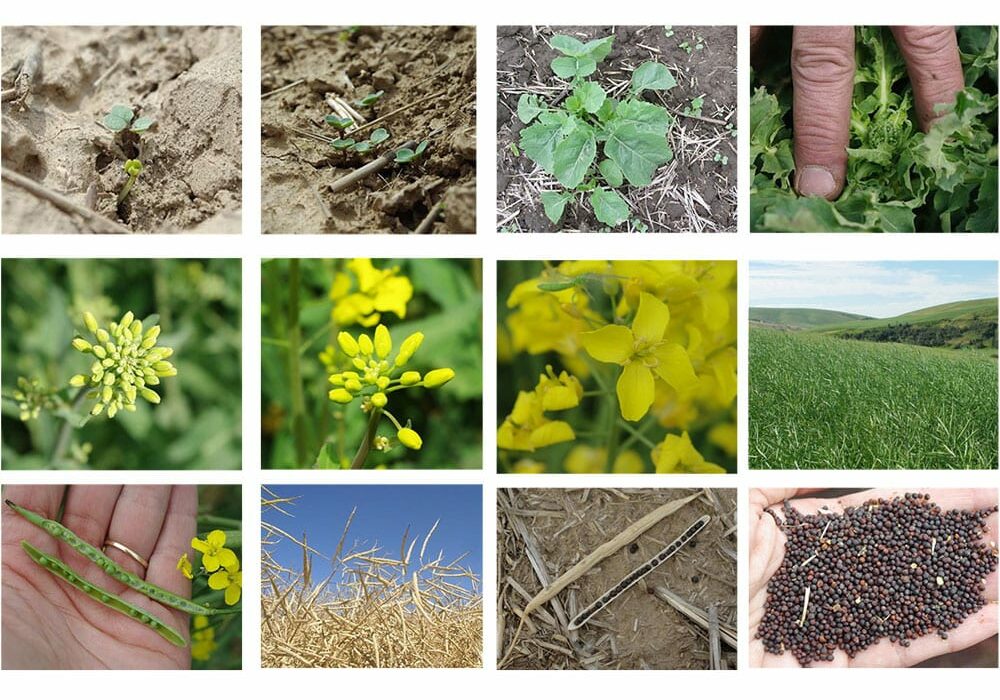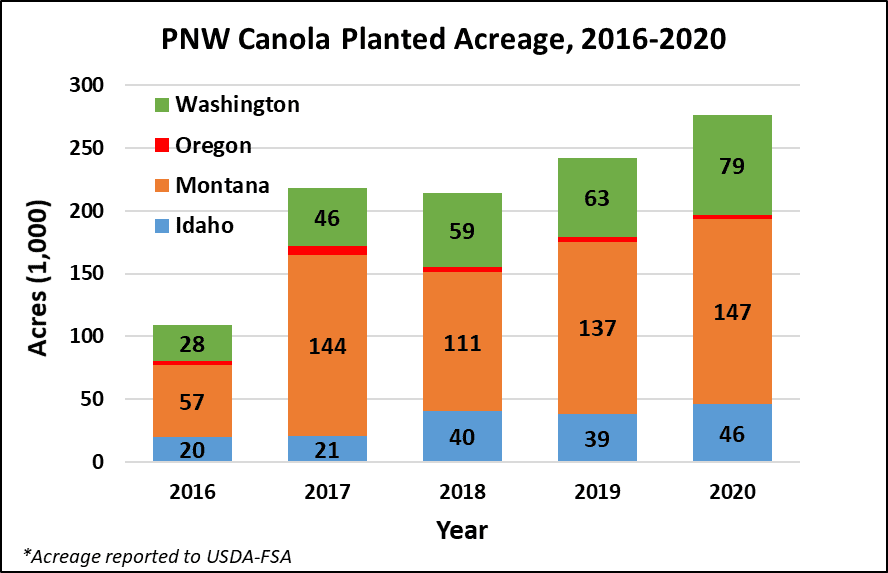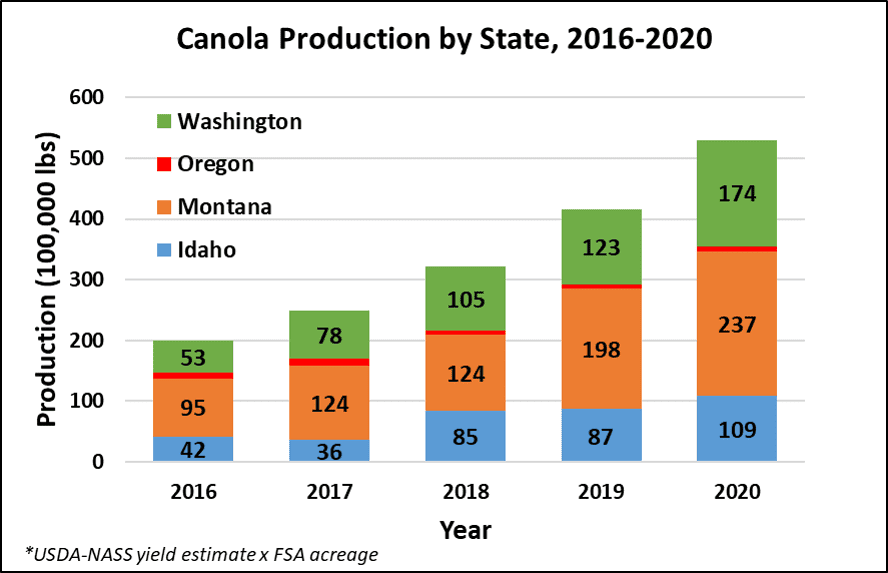Where Does Canola Oil Come From?
When you purchase canola oil from a grocery store, it has come from small beginnings! See our new video "Canola in the Pacific Northwest: From Farm to Table", or for a quick overview, canola production looks something like this:
Plant the seed
Farmers use a piece of equipment called a drill or planter to place the canola seeds. They are planted at a relatively shallow depth (0.5” to 1.5") with four to ten plants per square foot.
Watch it grow and blossom
Spring canola takes about 50 days from planting to flowering and continues growing to its full height of about four feet. Winter canola often takes four months after January 1 to begin flowering and can be five to seven feet tall at maturity.
Harvest the seeds from the pod
Canola seeds grow in pods with about 20-40 seeds per pod. At maturity, the seeds are threshed from the pod by a combine.
Deliver seeds to production facility
Seeds are crushed to extract the oil (canola seed contains 35-45% oil), followed by several more processing steps to be ready for the consumer market as bottled canola oil.
Pacific Northwest canola production
The PNW produced 530 million pounds of canola in 2020, almost 10% of the total U.S. canola production. (see bar chart below)
Added value
The byproduct after crushing canola seed is used as a high-quality livestock feed.

Canola Production in the PNW and United States
In 2020, an estimated 1.825 million acres of canola were planted in the U.S. with a national average yield of almost 1,931 pounds per acre. This accounted for more than 3.45 billion pounds of canola production. In the four-state PNW region, canola was planted on 276,000 acres with an average yield of 2,105 pounds per acre for a total production of 530 million pounds.


